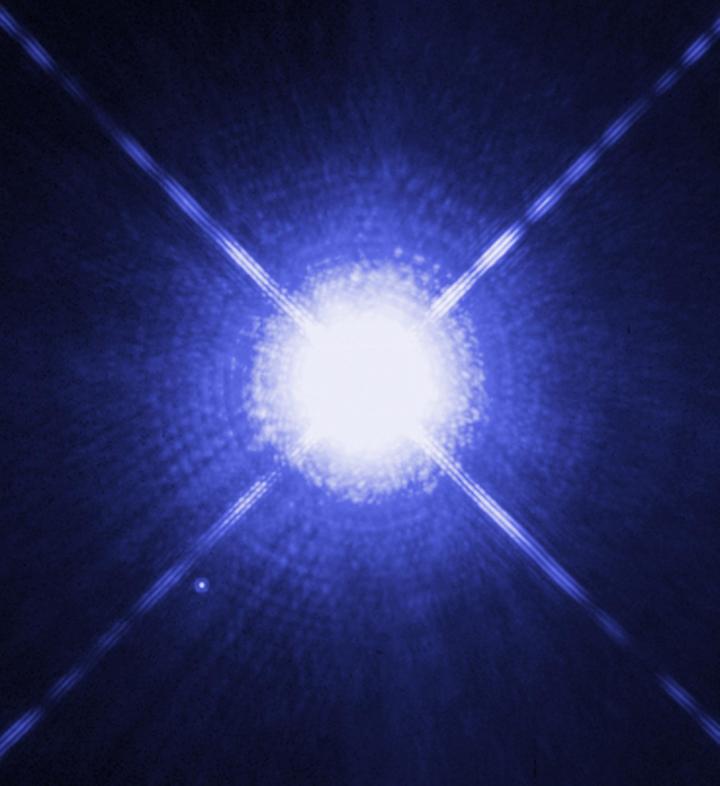Who hasn’t heard of the Dog Star, Sirius? It’s the brightest star in the sky in late winter and early spring. And boy, is it easy to find. Just face south at 8 P.M. and look for Orion. Plus, you also have a chance to see its pup! Yes, it’s a two-dog night.
How to Find Sirius
- Simply locate Orion. See its famous belt made up of three bright stars? The belt points downwards towards Sirius.
- Follow the stars down and left. They point to the most brilliant star, which has a distinct blue-white color. Simple.
What is it Called the Dog Star?
Sirius is nicknamed the Dog Star because it’s the brightest star in the constellation Canis Major (which means “greater dog” in Latin).
It’s super bright because it’s one of the closest stars to our sun.
The name may come from ancient Egypt. They believed an alliance between the sun and the brightest star caused summer’s heat. Even today we use the expression “Dog Days” to mean sultry weather, unaware that its origins echo from those vanished centuries.
This ruling star of the Big Dog constellation was considered bad news for over a thousand years. In the Roman Empire its presence was so ill-omened that hit men were sometimes employed to sacrifice dogs when Sirius appeared. Even Dante, obviously no patron of the Kennel Club, wrote of “the scourge of days cannicular.”
The Dog and The Pup
Sirius is a binary star system with a tiny white dwarf companion you can see with a telescope.
When seeing Sirius we’re actually viewing the combined light of two famous stars. Circling each other like slow dancers, and wildly different in brightness, the duality has been hard for even telescopes to detect—until now.
During the next 12 years, the pair are most widely separated as they swing through their lopsidedly oval 50-year orbit. Generally some two billion miles apart, equaling Uranus’ distance from Earth, their images usually merge into a single dot, frustrating backyard telescope users who are trying to catch the dim celebrated companion, often called “the Pup.” But these nights it’s finally do-able.
Photo: Sirius A and Sirius B (the white dwarf) to the lower left. Credit: Hubble Space Telescope.
The Pup is a fantastically tiny sphere—a star only about the size of Earth, yet with a mass 350,000 times greater. The combination of toy size and sunlike heaviness means it’s packed to an astonishing density. A lollipop made of its material would outweigh a car.
Sirius B is thus a white dwarf, a collapsed star. Imagine landing on its diamond-hard surface: Even if you could shield yourself from the heat, its awesome gravity would freeze all motion like a frame in a jammed projector. Not one breath could be taken, nor a finger lifted to warn others. Even a beacon pointed upward would turn redder as its light’s waves, struggling against the gravity, stretch out and change color. Yet these fantastic stars are common. Of the 58 suns lying within 12 light-years of Earth, five are white dwarfs. The Pup is the nearest of them all.
It’s no accident they’re so plentiful. These ultra-dense objects are the normal old age for 97% of all stars. When we look toward Sirius B, the Pup, we’re glimpsing our own Sun’s future as a tiny compressed ball of crushed fire.
But it’s the primary, “A” star, 10,000 times brighter than its companion pup, that makes Sirius such a lighthouse. The nearest blue-hot sun to Earth, its beautiful diamond dazzle arrives after just an 8 ½ year journey through space.
Quite an eyeful at nightfall, blazing in the southern sky.


